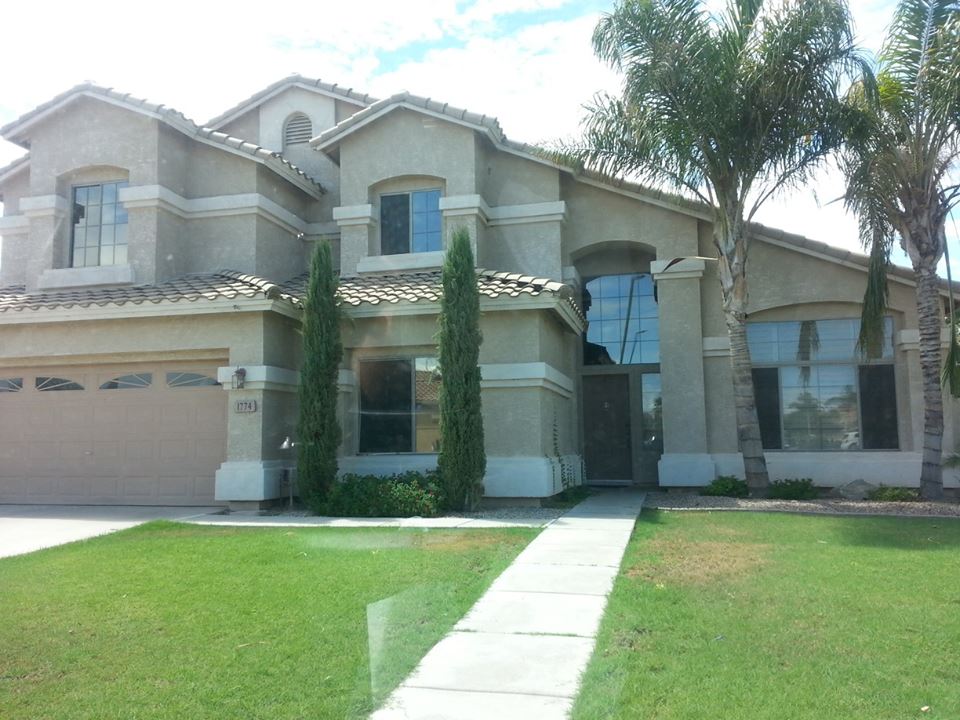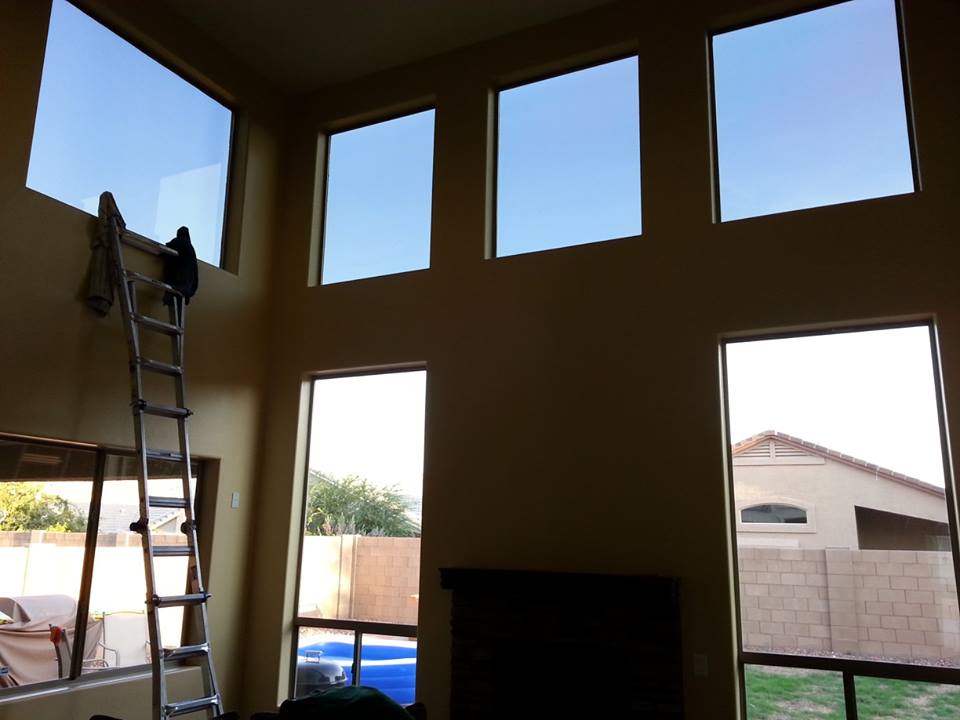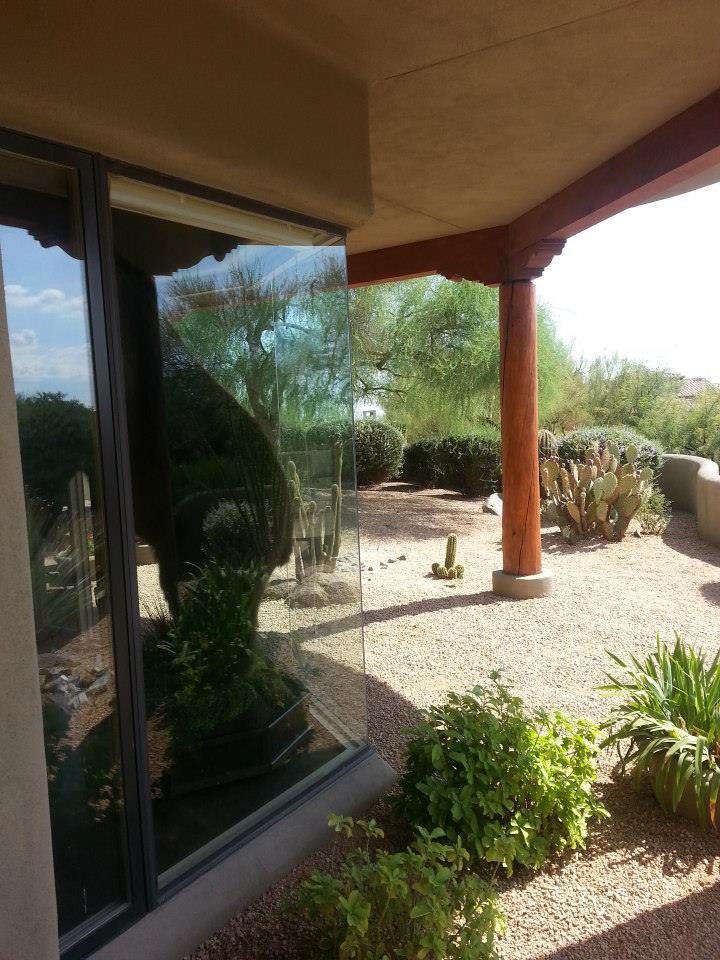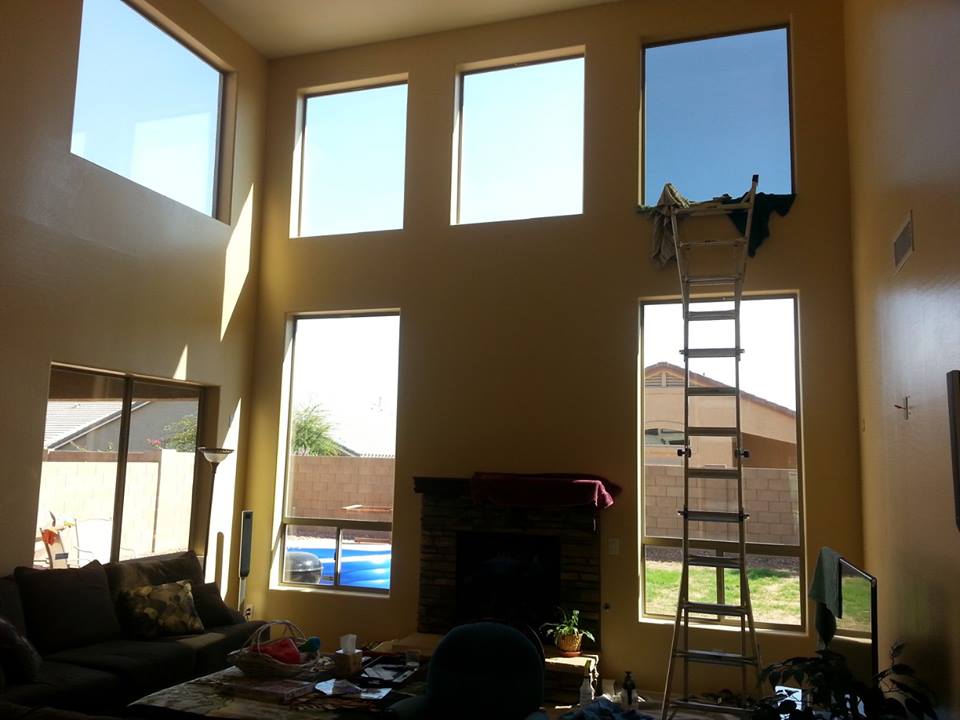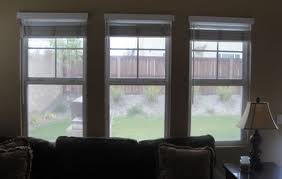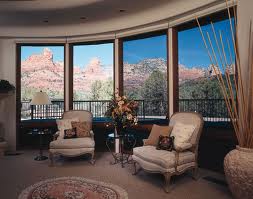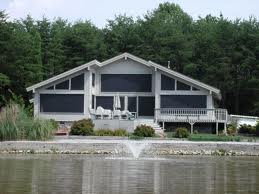Is Window Film Safe for Dual-Pane Windows?
This is a question we get asked quite a bit and the answer is yes!! Using dual-reflective films on dual-pane windows is not only safe, but extremely effective. MAKE sure that the absorption rate is NOT over 48% -- that can cause possible window breakage, regardless of whose film you use.
Unfortunately, some companies state that it is NOT safe (however, they sell dual-reflective film for dual-pane windows), so that they can charge consumer 3x more for a clear film. Up-selling anyone?
Some of our competitors make many great products and window film is
one of them. CPFilms makes window film -- that's it, just window film.
Branding
Branding is an amazing marketing tool and there are some great marketers out there; whereas CPFilms (owned by Eastman) doesn't advertise as much, but that is because they are utilizing their money for R&D to ensure that our consumers will receive the best product!
Be careful too if a sales person tells us that their film blocks 99% of the heat. The heat that transfers into your home is through a variety of different avenues, not just the sun. UV light accounts for 40% of the total amount, Visible light accounts for 25%, Heat accounts for 25%, and miscellaneous accounts for 10%.
Education is Key
So, a film may block 99% of the heat; however, that is only 25% of the total, so ask this specific question "What is the total solar heat rejected?" This will give you a percentage of the heat that does not enter into your home -- this can range from 30 - 85%.
Education is key to receiving not only the best product, but best customer service. If the sales person does not show you the varying percentages of what their window film can do, then run the other way, because they are not educating you, they are just selling you.
Here is a list of window film terms if you want to understand what you are buying: (taken from
LLumar's website:
Definitions of Key Terms
% Solar Transmittance (T-sol): The ratio of the amount of total solar energy in the full
solar wavelength range (300-2,500 nanometers) that is allowed to pass directly
through a glazing system (e.g., a film/glass combination) to the amount of total
solar energy falling on that glazing system. Value is usually expressed as a
percent.
Relevance to the consumer or specifier:
The smaller this number, the cooler objects will be when directly
exposed to sunlight passing through the window, since they will be exposed to
less incident solar energy.
% Solar Reflectance (R-sol): The ratio of total solar energy which is reflected outwardly by the
glazing system to the amount of total solar energy falling on the glazing
system. Value is usually expressed as a percent.
Relevance to the consumer or specifier:
This number together with the T-sol determines the solar absorption
value of the film. This latter value is most critical in determining what film
is suitable for a given glass type & situation. Generally, the higher this
number, the better.
% Solar Absorptance (A-sol): The ratio of the amount of total solar energy absorbed by a glazing
system to the amount of total solar energy falling on the glazing system. Solar
absorption is that portion of total solar energy neither transmitted nor
reflected. Since solar transmittance and solar reflectance are measured
directly, the following equation should be used in calculating solar absorption.
Solar absorption =1.00 - (solar transmittance) - (solar reflectance).
Relevance to the consumer or specifier:
Generally, the lower this number, the better. This number is a
critical determinant in the potential for thermal stress (how hot the glass
gets). Too much solar absorption can excessively warm the glass cause window
failure, either though glass breakage or seal failure. Always use the
Film-to-Glass Recommendation Chart (a
web app is available for specifiers) to avoid wrongly specifying a film for a
given glazing system.
% Visible Light Transmittance (VLT): The ratio of the amount of total visible solar energy
(380-780 nanometers) that is allowed to pass through a glazing system to the
amount of total visible solar energy falling on the glazing system. Value is
usually expressed as a percent. Glare is influenced by visible light
transmittance through a glazing system. Visible light accounts for about 44% of
the sun's energy reaching Earth's surface. The VLT value is often weighted or
measured in the area of the spectrum most easily sensed by the human eye, around
550nm.
Relevance to the consumer or specifier:
The smaller this number, the greater the glare reduction. Of concern
to many clients because while they want glare reduction, they often do not want
a room "too dark."
% Visible Reflectance-exterior and interior (VLR-ext and VLR-int): The
percent of total visible light falling on a glazing system that is reflected by
that system. Generally, VLR values are for exterior surfaces, those exposed to
sunlight, unless otherwise specified. For dual-reflectance films, values are
often given for each surface, the exterior (usually listed first in
specification charts) and the interior (listed second).
Relevance to the consumer or specifier:
A guide to how "shiny" a film looks from the exterior of a building
relative to other films. Clear glass has a VLR of about 8%. And the lower the
interior reflectance value, the less shiny the window will appear at
night from the interior when it is very dark outside but brightly lit inside.
% UV Transmission: The ratio of the amount of total UV solar energy (from 300-380 nanometers) that
is allowed to pass through a glazing system to the amount of total UV solar
energy falling on the glazing system (little if any UV light from 100-300
penetrates glass). Ultraviolet is one portion of the total solar energy spectrum
which greatly contributes to fading and deterioration of fabrics and
furnishings. Sometimes UV performance numbers are given in term of how much is "rejected," that is, what percentage
of incident UV is prevented from
passing through the glazing system. UV is generally subdivided into 3 smaller
bands, progressively smaller in wavelength (therefore higher in frequency): UVA
(380-320nm); UVB (320-280); UVC (280-100). Clear glass blocks very little UVA
but most UVB. High quality window films can block well over 99% of both UVA and
UVB.
Relevance to the consumer or specifier:
This parameter is a very important factor in the purchase of window films.
Excessive UV is the most dangerous part of the solar spectrum for human health
(it’s implicated in cataracts and skin cancer, and adversely affects people with
Lupus, Xeroderma Pigmentosum, Porphyria, and other such diseases. UV is
generally the biggest factor in damage to drapes, carpets, furniture, though
shorter wavelengths of visible light (extending into the violet and blue bands)
may play an important role as well. UV blocking is also important for the
longevity of the window film itself.
U-value:
The U-value (sometimes called the "U-Factor") should be understood as
the overall heat transfer coefficient of the glazing system. The
U-value is a measure of the heat transfer that occurs through the
glazing system between its outer and inner surfaces. This value is a
function of temperature, and is expressed in BTUs per square foot per
hour per degree Fahrenheit ( BTU/ ft2/hr/°F or w/m2). The lower the
U-value, the better the insulation qualities of the glazing system.
Alternative definition: The "coefficient of heat transfer;" a measure
of the ability of a material to resist heat transfer. The number is
actually the number of BTUs per square foot per hour per °F of
temperature difference (or w/m2 per °C) across a barrier. The lower the
U-value, the slower heat moves by conduction through the material.
Others in the insulation and construction industry use the
measure of "R-Value," which denotes a material's ability to act as an
insulator. The higher the R-Value, the slower the heat transfer rate;
it is the reciprocal of the U-Value, expressed as R = 1/U. A window
with a U-value of 0.25 has an R-value of 4.0 (1 divided by 0.25).
U-Value and R-Value measurements are similar—but reciprocal—in
nature. They quantify the rate at which heat is transferred through a
material due to temperature differences between its opposing surfaces.
The window films industry uses two standards of measurement to
determine U-values for glazing systems:
Winter U-value: With
(a) the outside temperature set at -0.4°F (-18°C), (b) the inside
temperature set at 69.8°F (21°C), (c) no sunlight illuminating the
glass, and (d) the outside wind speed set at 12.3 mph (5.5 m/s). The
"Winter U-value" can be measured in terms of the number of BTU’s per
square foot per hour (w/m2) lost through the glass.
Summer U-value: With
(a) the outside temperature set at 89.6°F (32°C), (b) the inside
temperature set at 75.2°F (24°C), (c) sunlight illuminating the
exterior of the glass at the intensity of 248.2 BTUs per square foot
per hour (783 w/m2), and (d) the outside wind speed set at 6.2 mph (2.8
m/s), the "Summer U-value" can be measured in terms of the number of
BTUs per square foot per hour (w/m2) gained through the glass by
conduction and re-radiation.
Relevance to the consumer or specifier:
U-values of glass are not much affected by most films, although newer
classes of low-e films offer significant heat loss reduction in winter,
and improved heat rejection in summer by reflecting re-radiated
far-infrared energy.
Shading Coefficient (SC): The ratio of the solar heat gain through a given glazing system to the
solar heat gain under the same conditions for clear, unshaded double strength
window glass (DSA). Shading coefficient defines the sun control capability or
efficiency of the glazing system relative to a standard window.
Relevance to customer or
specifier: The
smaller the number, the greater the solar heat reduction. This term is a
standard measure in the glass industry; used to rate the relative effectiveness
of a glazing system compared to a "standard window." However, the glazing
industry is moving away from use of the term since a "standard window" is no
longer a single pane clear window with double strength glass. SHGC is a better
term for quantifying glazing performance because it allows for easy comparison
of the solar performance of a given window to any other.
% Total Solar Energy Rejected (TSER): The percent of incident solar energy rejected by a glazing
system. This value equals solar reflectance plus the part of solar absorption
that is both re-radiated and conducted/convected outwardly.
Relevance to the consumer or specifier:
The higher this number, the better. Like "shading coefficient" in the
glass industry, this term historically has been a standard one in the film
industry. The number is a good way to compare relative performance of various
film products. (Remember that this number is measured for a film on clear, 3mm
glass, unless otherwise stated.)
Solar Heat Gain Coefficient (SHGC): Also known as the g-value, the SHGC is the fraction of incident
solar radiation that actually passes through that window, including solar energy
that is both directly transmitted and that which is absorbed and subsequently
released inwardly by re-radiation and conduction. SHGC is expressed as a number
between 0 and 1. The lower a window's solar heat gain coefficient, the less
solar heat enters a room space. This number is the mathematical complement of
the TSER value. In other words, the sum of the TSER (Total Solar Energy
Rejection, in decimal form) of a glazing system and its SHGC value is 1;
therefore,
1 - TSER = SHGC
Thus, if the TSER of a specified film/glass combination is 58%, then
1 - .58 = .42, which is the SHGC of the window.
Note: This term is being increasingly used in the window film
industry because it is a central term in the window glazing industry which does
not use the term “TSER.”
Relevance to the consumer or specifier:
This is the industry’s standard number for comparing the solar performance of a
window. The lower this number, the better.
Emissivity: Short
definition: the measure of a surface's ability of reflect or emit heat in
the form of radiation (wavelengths from 2500-60,000 nm).
Long definition/discussion: Emissivity is a measure of a surface's ability
to emit radiation. When heated, a low-E surface will radiate less
electromagnetic energy than a high-E surface at the same temperature. The "E"
(Emissivity) value is actually the ratio of the amount of radiation emitted from
a given surface to the amount of radiation emitted by an ideal "black body" at
the same temperature. Thus, emissivity values must be between 0 and 1.
(Emissivity simply answers the question: How good does this object radiate heat
as compared to a black body?) In the process of emission (re-radiation), the
surface is shedding radiant energy to the environment, thus cooling itself. A
low-E surface cools itself more slowly than a highly emissive surface.
Therefore, installers and sales reps should be aware that sun-exposed Low-E
glass with film, all other factors being equal, will tend to remain at a higher
temperature than a regular filmed glass. This fact is taken into consideration
in the film-to-glass recommendations calculations.
Low-E surfaces also tend to reflect longer wave
far-infrared radiation,
the kind of radiation emitted by objects at room temperature, indeed by all
objects cooler than about 1300°F (705°C). Many low-E coatings on window glass
may be excellent reflectors of
far-infrared (thus reducing winter heat loss through a home's windows) but very
poor reflectors/absorbers of UV,
visible, and near infrared wavelengths found in
solar radiation, and thus may not be
sufficient for solar control purposes without additional coatings (such as
high-performance window films). There is some advantage in low-e coatings in
summer since such glazing can reduce the transmission of far-infrared energy
emitted by objects warmed by the sun outside a home (sidewalks, rocks, pavement,
outside adjacent walls, etc.).
Relevance to the consumer or specifier:
The lower the emissivity value, the lower the heat gain in summer and the
lower the heat loss in winter, including those times when the sun is not shining
on the window.
Emissivity is a measure of how
much heat is emitted from an object by radiation. Heat is transferred to and
from objects through three processes: conduction, convection, and radiation. For
instance, on a hot night, heat will be conducted through a window from the
outside, causing the inside pane to become warm. Convection, or natural
circulation, of the air in the room past the window will transfer some of that
heat into the room. But the window will also radiate heat as infrared waves,
which will warm objects throughout the room. This radiative heating is why you
can feel the heat of a red-hot piece of metal (for instance, a heating element
on an electric stove) from several feet away.
Low-emissivity, or low-e, coatings are put on window panes to reduce the amount
of heat they give off through radiation. In hot climates, where the outside of
the window will typically be hotter than the inside, low-e coatings work best on
the interior of the outside window pane. In cold climates, where the inside of
the window is typically hotter than the outside, the low-e coatings work best on
the inside window pane, on the side that faces toward the outside. To learn more
about window coatings, see
"Advances in Glazing Materials for Windows," prepared by the U.S. Department of Energy's Energy
Efficiency and Renewable Energy Clearinghouse." Quoted from the following
Department of Energy web site:
http://www.eren.doe.gov/consumerinfo/energy_savers/glossary.html )
|
Light to Solar Heat Gain Ratio (LSG):
the ratio of the amount of visible light to the amount of
solar heat that is allowed to pass through a glazing system. If this ratio is
greater than 1.00, it means that the glazing system (a window system with film
installed on it, for example) blocks more heat than light, which requires the
selective blocking of more infrared radiation than visible light. This term is
replacing "LE" (luminous efficacy) because of the gradual extinction of the term
"shading coefficient." The higher the LSG ratio, the better the glazing is at
reducing unwanted solar heat gain and maximizing desirable natural light
transmittance. This term is replacing "luminous efficacy" in the industry. VLT /
SHGC = LSG.
Relevance to the consumer or specifier:
The higher this number, the more efficient the film product is at reducing
solar heat gain rather than visible light.
% Summer Solar Heat Gain Reduction (Summer SHGR):
The percent by which incoming
solar heat energy is reduced by the addition of a filtering material. For
example, if a clear glass pane has solar heat gain of 86% (a solar heat gain
coefficient of .86), and the addition of a window film yields a new solar heat
gain of only 40%, then the HEAT GAIN REDUCTION is from .86 to .40. We compare the difference in heat
gain to the original heat gain to get the percentage of heat gain reduction. The
calculation runs as follows: (.86 - .40)/.86 =
0.535, or 53.5%.
Relevance to the consumer or specifier:
The higher this number, the greater heat gain is reduced. This is an
accurate way to directly compare the difference in heat gain before and after a
film installation.
% Winter Heat Loss Reduction: The percentage by which heat energy loss (via conduction,
convection, and radiation) through a given glazing system is reduced by the
addition of an insulating material. For example, if a clear glass pane has heat
loss value of .9 BTUs per square foot per hour per degree F, and the addition of
an insulating window film reduces the heat loss to .5 BTUs per square foot per
hour per degree F, then the HEAT LOSS REDUCTION is from .9 to .5. We compare the
difference in heat loss to the original heat loss to get the percentage of heat
loss reduction. The calculation runs
as follows: (.9 - .5) / .9 = 0.44, or 44%.
Relevance to the consumer or specifier:
The greater this number, the better. This value is a way to compare the
(non-solar) insulation of a film, irrespective of its solar performance.
% Glare Reduction: The percent by which visible light transmission is reduced by the addition of a
filtering material. For example, if a clear glass pane has a VLT of 90%, and the
addition of a window film yields a new VLT of 50%, then the GLARE REDUCTION is
from 90 to 50. We compare the difference in light transmission to the original
transmission to get the percentage of glare reduction. The calculation runs as follows: (.90
- .50)/.90 = 44.4%
Relevance to the consumer or specifier:
The greater this number, the better (in terms of reducing harsh or excessive
light).



















